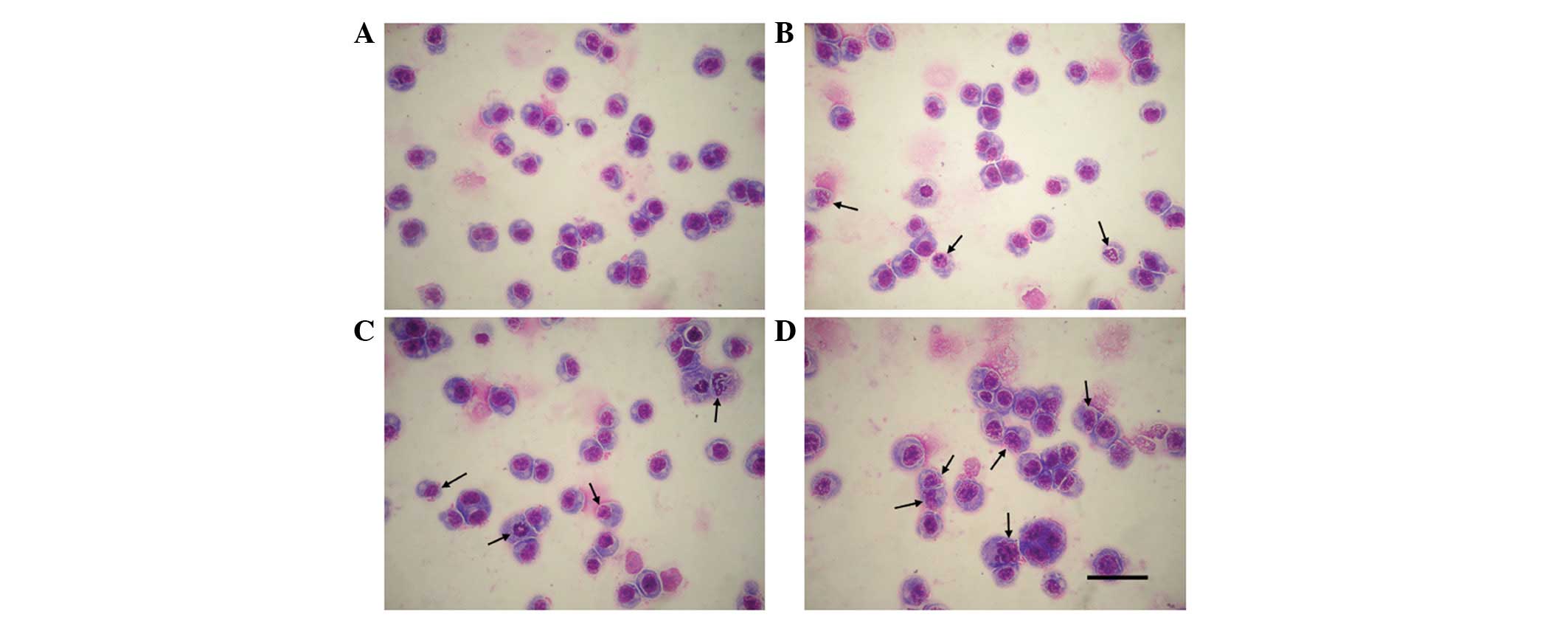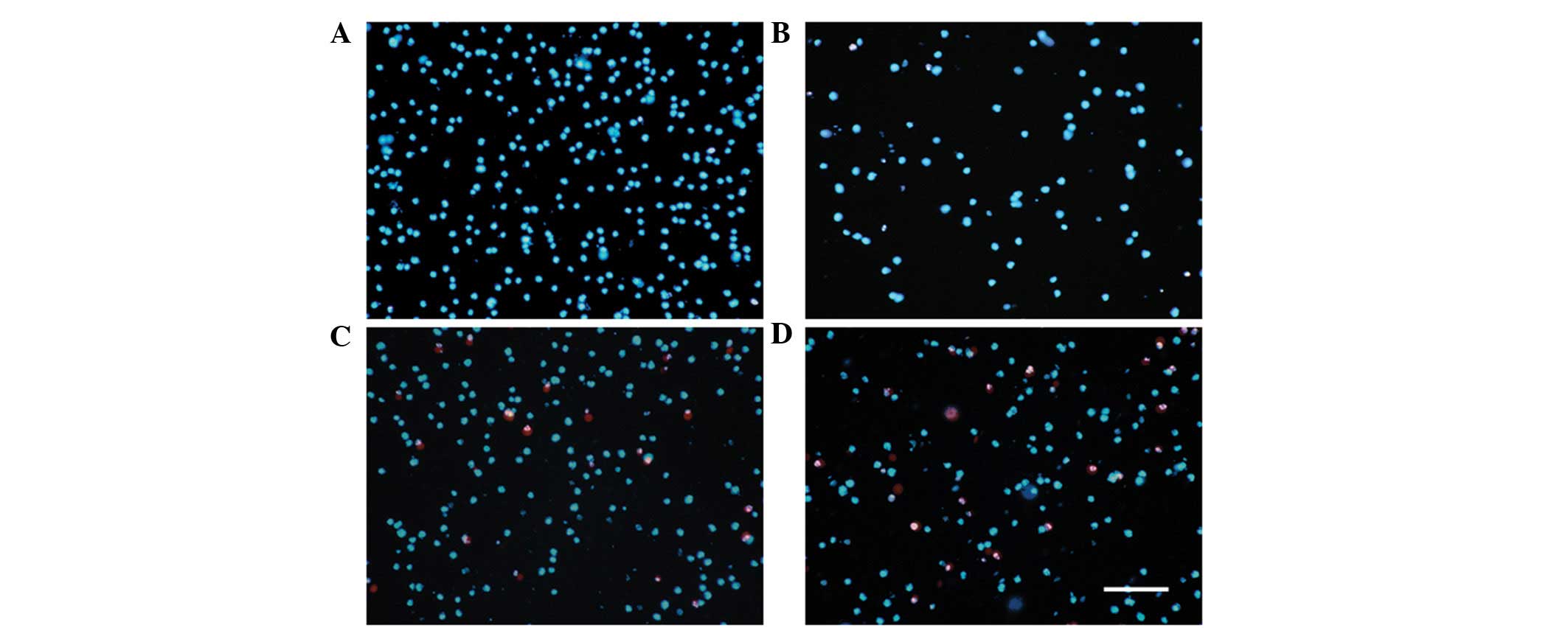Chlorogenic acid induced apoptosis and inhibition of proliferation in human acute promyelocytic leukemia HL‑60 cells
- Authors:
- Published online on: August 27, 2013 https://doi.org/10.3892/mmr.2013.1652
- Pages: 1106-1110
Metrics:
Total
Views: 0 (Spandidos Publications: | PMC Statistics:
)
Total PDF Downloads: 0 (Spandidos Publications: | PMC Statistics:
)
Abstract
Chlorogenic acid (CA), is found in high abundance in the leaves of a number of plants and has antibacterial, antiphlogistic, antimutagenic, antioxidant and other biological activities. It reportedly possesses antitumor activity via the induction of apoptosis in chronic myelogenous leukemia (CML) cell lines, including U937 and K562 cells. However, the effects of CA on human acute promyelocytic leukemia (APL) HL‑60 cells remains unknown. In the current study, the ability of CA to cause G0/G1 cycle arrest and induce apoptosis in the treatment of human APL HL‑60 cells was investigated. Following 5 days treatment with 1, 5 and 10 µM CA, cell viability and the effects of CA on the growth of HL‑60 cells were investigated using a growth curve constructed using trypan blue staining. Induction of apoptosis and inhibition of cell proliferation were estimated using Wright's‑Giemsa staining, Hoechst 33342 and propidium iodide (PI) staining, DNA ladder analysis and flow cytometry, following 48 h cell treatment with various doses of CA. The results indicated that the growth of HL‑60 cells reached a plateau phase at 72 h and the proliferation inhibition rate of HL‑60 cells in CA‑treated groups was significantly higher compared with the control, in a time‑ and dose‑dependent manner. However, the level of apoptosis of HL‑60 cells treated with CA markedly increased and formed more apoptotic bodies compared with the cells with no drug treatment, according to the Wright's‑Giemsa staining, Hoechst 33342 and PI staining, respectively. Using DNA ladder analysis and flow cytometry it was shown that a significant characteristic DNA ladder was observed when treated with CA. CA was capable of arresting cell cycle at G0/G1 phase. Apoptosis of HL‑60 cells treated with CA for 48 h was promoted significantly in a dose‑dependent manner, as well as the inhibition of proliferation. The observations revealed that CA inhibits proliferation and induces preprophase apoptosis of HL‑60 cells. Thus, the concentration of 10 µM may be the optimal dose for treatment human acute promyelocytic leukemia.














